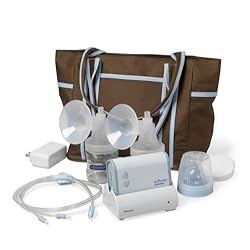Some mothers have an excessive amount of Lipase in their breastmilk. Lipase naturally occurs in all breast milk, just more so in some mothers. The indication of a lipase issue is that you freeze your milk properly and thaw it properly and after doing so your milk tastes bad. These tastes are often described as soapy, sour, or skunky. Milk with excessive lipase is okay to feed your infant but the problem occurs when a baby does not like the funny taste and thus refuses to drink it.
The proper way to deal with excessive lipase is to scald your milk before you freeze it.
How to Scald:
* Put your pumped or expressed breastmilk in a sauce pan and heat to approximately 180 F (82 C). This will generally be when you see little bubbles around the edge of the pan. Do not heat to a full rolling boil.
* Quickly cool and store the milk.
(caveat: some moms prefer to heat only to 160 because it is believed to leave a small amount more nutrients, for some mothers this will work and for some it will not).
It is a bit extra work to scald your milk but generally this method works and all is well. However if you are planning to return to work you may be wondering how you can possible deal with all these extra steps. Don't fret it can be done quite simply!

First however you need to run a couple of tests to find out what method will work for you.
Test #1: Express your milk and put it in the refrigerator. Test hourly for taste. How long does it take to turn sour?
The purpose of this test is to let you know how long it takes for your milk to start tasting bad. If it does not start tasting bad until well after 24 hours then you may not need to freeze your milk at all. You can simply pump and put it in the fridge for the next day.
Test #2: Express your milk and put it in the refrigerator for the same amount of time you'd be at work . Then scald the milk. Repeat first test.
The purpose of this test is to see if after scalding and freezing your milk will thaw without tasting bad. If you pass this test then you know that scalding will work for you. Go back to the findings of test one. Assess how long you will be at work. If you are going to be at work for 8 hours and your milk does not start tasting bad until 10 hours refrigerated then you can simply pump your milk at work, store it, and bring it home to scald.
m
Test #3: Repeat test two except heat milk to 160 F instead of 180 F or visa versa depending on where you started.
The purpose of this test is simply to see if you can heat to a lower amount as to possibly leave a few additional nutrients in your milk. Your breastmilk still has plenty of wonderful nutrients at 180 degrees, so this is an optional test.
Test #4: Use a bottle warmer to scald your milk. Most moms say this takes them a minute or two. You may need to experiment with this until you find the right way to scald your milk using this device.
If after completing the first three tests you realize your milk tastes bad quite shortly after pumping, if you have not scalded it, then you know you need to scald while at work. This is typically possible using a bottle warmer. After pumping at work then scald your milk using a bottle warmer then cool. Freeze when you get home.
Information obtained from kellymom.com and llli.org I am always open to corrections and feedback on additional ways to help tackle this issue.
No comments:
Post a Comment